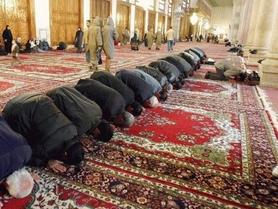The Eight Aspects of Religion
All religions share features that are usually interdependent. Although religions can have many different aspects, eight aspects have been identified that are common to the majority of religions. These aspects are: beliefs, sacred texts, myths and other stories, rituals, symbols, social structures, ethical principles and oral or written codes of behaviour, and religious experience and spirituality.
BeliefsArticles of faith thought by adherents to be true or evident that express the self-understanding of the tradition. They offer a comprehensive picture of reality, allowing believers to accept the worldview of that religion and make sense of life accordingly. The earliest attempts to put beliefs into words used sacred stories and myths to convey deep insights.
Myths and other StoriesRelate in imaginative detail a believed truth, such as that conveyed by historiography, legends, edifying parables (to instruct or benefit, specially morally or spiritually; to uplift) and folklore.
Symbols
Abstract principles by which a person, action or thing can stand for something else. Symbols convey the meaning of a belief.
Ethical Principles and oral or written codes of behaviour
Visionary ideals of a perfect world that influence all morality, laws, norms and ideas about what adherents ‘ought’ to do. Specific advice or lists or qualities, values or laws that would bring about the idea.
|
Sacred TextsCompilations of oral and written literature in which the essential parts of the religious tradition are recorded. They maintain continuity for generations of adherents, therefore considered sacred, holy and separate from the everyday.
RitualsRefers to religious or other formal ceremonies that consist of a series of actions, sayings, prayers, contemplative practices, dances or painting. Performed either communally or individually and according to a prescribed order, they ritualise and reinforce beliefs, express spirituality and are thus considered 'acts of holiness'.
Social Structures
An established social model to which society conforms. They often place religious leadership at or near the top of society and include organisational roles, patterns of communication and systems of authority. Leadership groups communicate established beliefs and traditional practices from one generation to the next.
Religious experiences and spirituality
Spiritual, sacred, mystical, personal and/or subjective experiences with connection to transcendent reality. They often emerge through life events in religious/non-religious contexts to which religious meaning is attached by leadership, participants or witnesses. It generally includes certain scared practices that facilitate access to Ultimate Reality and affirm beliefs for adherents.
|



